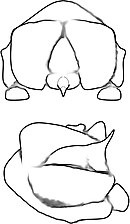
Agnostida are an order of extinct arthropods which have classically been seen as a group of highly modified trilobites, though some recent research has doubted this placement. Regardless, they appear to be close relatives as part of the Artiopoda. They are present in the Lower Cambrian fossil record along with trilobites from the Redlichiida, Corynexochida, and Ptychopariida orders, and were highly diverse throughout the Cambrian. Agnostidan diversity severely declined during the Cambrian-Ordovician transition, and the last agnostidans went extinct in the Late Ordovician.

Trilobites are extinct marine arthropods that form the class Trilobita. Trilobites form one of the earliest known groups of arthropods. The first appearance of trilobites in the fossil record defines the base of the Atdabanian stage of the Early Cambrian period and they flourished throughout the lower Paleozoic before slipping into a long decline, when, during the Devonian, all trilobite orders except the Proetida died out. The last trilobites disappeared in the mass extinction at the end of the Permian about 251.9 million years ago. Trilobites were among the most successful of all early animals, existing in oceans for almost 270 million years, with over 22,000 species having been described.

Nevadia is an extinct genus of redlichiid trilobites, with species of average size. It lived during the Atdabanian stage, which lasted from 530 to 524 million years ago, in what are today Western Canada, the Western United States, and Mexico.
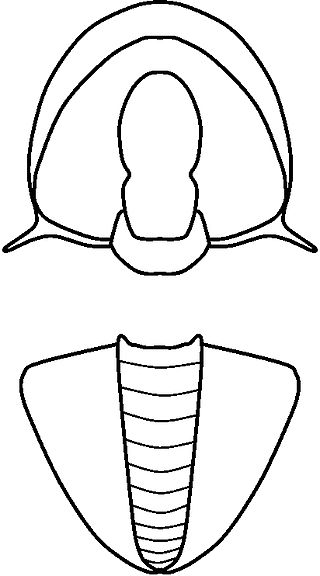
Acidiscus is a genus of eodiscinid trilobite belonging to the family Weymouthiidae Kobayashi T. (1943), Order Agnostida Salter (1864). It lived during the Botomian stage = late Lower Cambrian Stage 4 ; the upper Botomian boundary corresponds to base of the Middle Cambrian, Miaolingian Series and Wuliuan stage.

Acimetopus is a genus of eodiscinid trilobite belonging to the family Weymouthiidae Kobayashi (1943), Order Agnostida Salter (1864). It lived during the Botomian stage. = late Lower Cambrian Stage 4 ; the upper Botomian boundary corresponds to base of the Middle Cambrian, Miaolingian Series and Wuliuan stage.

Analox is a genus of eodiscinid trilobites belonging to the family Weymouthiidae Kobayashi T. (1943), Order Agnostida It lived during the Botomian stage. It can easily be distinguished from other trilobites by the two furrows that extend forwards and sidewards from the front of the glabella.

Bathydiscus is an extinct genus from a well-known class of fossil marine arthropods, the trilobites. It lived during the Botomian stage.
Leptochilodiscus [= Kerberodiscus Bassett et al., 1976] is a genus of Lower Cambrian eodiscinid trilobite belonging to the family Weymouthiidae, order Agnostida. It lived during the Botomian stage = late Lower Cambrian Stage 4 ; the upper Botomian Stage boundary corresponds to base of both the Middle Cambrian Wuliuan stage and Miaolingian Series.
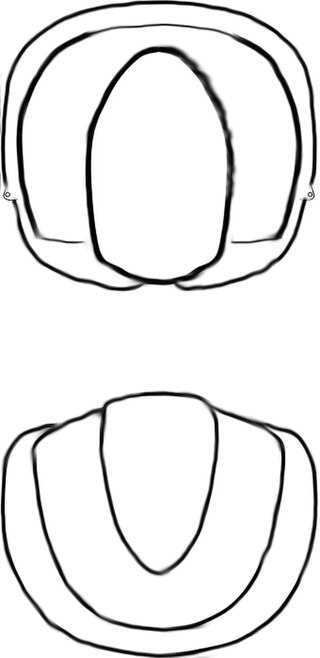
Oodiscus is an extinct genus of small size trilobite, with three known species. It lived during the Toyonian in what are now Canada and the USA.
Stigmadiscus Rasetti, 1966, is a genus of Lower Cambrian Eodiscinid trilobite belonging to the family Weymouthiidae Kobayashi (1943) Order Agnostida It lived during the Botomian stage, = late Lower Cambrian Stage 4 ; the upper Botomian Stage boundary corresponds to base of both the Middle Cambrian Wuliuan stage and Miaolingian Series.
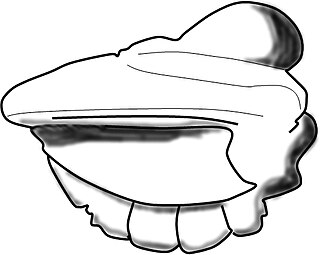
Chelediscus is a genus of Eodiscinid trilobite belonging to the family Weymouthiidae Kobayashi T. (1943), Order Agnostida Salter (1864). The Treatise assigns this genus to the Calodiscidae; Cotton and Fortey (2005) however move it to the Weymouthiidae. Chelediscus lived during the later part of the Botomian stage.
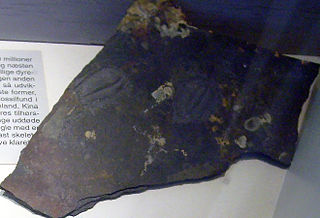
Buenellus higginsi is an average size trilobite, which lived during the Lower Cambrian period, in what is now North-West Greenland. It is a prominent member of the Sirius Passet fauna. Buenellus higginsi is the only known species in the genus Buenellus.

Tsunyidiscus is a trilobite belonging to the suborder Eodiscina. Tsunyidiscus appeared near the end of the Lower Cambrian, during the late Atdabanian stage of geologic time and some collections suggest it may have survived into the Botomian. The genus is very small, oculate and isopypous with a narrow dome-shaped glabella and a narrow bullet-shaped pygidial axis. Thorax consists of three segments. Tsunyidiscus is the only genus currently attributed to the family Tsunyidiscidae.

Pagetia is a genus of small trilobite, assigned to the Eodiscinid family Pagetiidae and which had global distribution during the Middle Cambrian. The genus contains 55 currently recognized species, each with limited spatial and temporal ranges.
Acmarhachis is a genus of trilobites in the order Agnostida, which lived in what are now Australia, Canada, China (Anhui), Kazakhstan, Russia (Kharaulakh), and the US. It was described by Resser in 1938, and the type species is Acmarhachis typicalis.
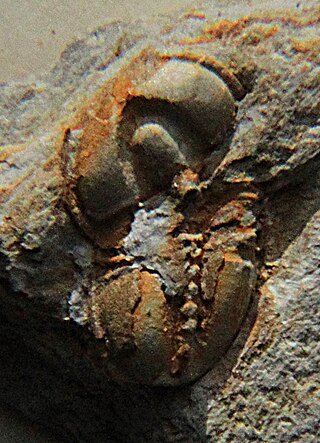
Eodiscina is trilobite suborder. The Eodiscina first developed near the end of the Lower Cambrian period and became extinct at the end of the Middle Cambrian. Species are tiny to small, and have a thorax of two or three segments. Eodiscina includes six families classified under one superfamily, Eodiscoidea.
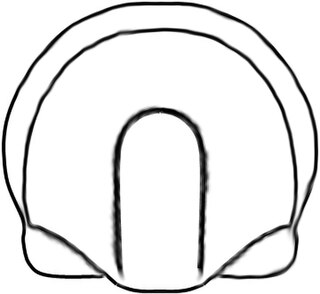
Mallagnostus Howell, 1935, is a trilobite genus belonging to the family Weymouthiidae Kobayashi T. (1943), Order Agnostida Salter (1864) according to Whittington et al. 1997. It lived during the late Lower Cambrian, with remains found in USA, Canada (Newfoundland), Spain, England, Russia, Mongolia, and the early Middle Cambrian as reported from China and Russia (Yakutia).
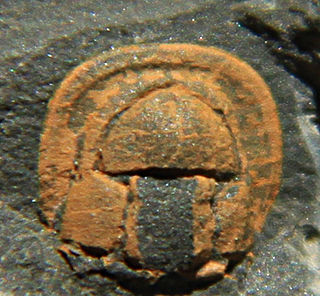
Condylopyge is a genus of agnostid trilobite that lived during the late Lower and early Middle Cambrian, in what are today Canada, the Czech Republic, England and Wales, France, Germany, Italy, Morocco, the Russian Federation, Spain, Turkey and Sweden. It can easily be distinguished from all other Agnostida because the frontal glabellar lobe is notably wider than the rear lobe. It belongs to the same family as Pleuroctenium but the frontal glabellar lobe does not fold around the rear lobe, as it does in that genus. Condylopyge is long ranging, possibly spanning the early Cambrian Terreneuvian Series in Nuneaton, central England into at least Drumian strata at various locations elsewhere.
Tannudiscus Pokrovskaya (1959) is a genus of eodiscinid trilobites belonging to the family Weymouthiidae Kobayashi T. (1943), Order Agnostida. It lived during the late Lower Cambrian, with remains found in Canada (Newfoundland), China (Gansu), The United Kingdom (England), and the Russian Federation.

Serrodiscus Richter and Richter 1941. is a genus of eodiscinid trilobite belonging to the family Weymouthiidae Kobayashi T. (1943), Order Agnostida. It lived during the late Lower Cambrian, with remains found in Canada, China (Gansu), The United Kingdom (England), Germany (Silesia), Poland, the Russian Federation, and the United States. It is named for the spines on the ventral side of the pygidium, which give it a serrated impression.
